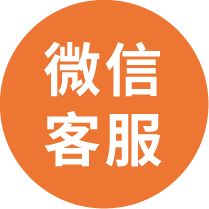Dclre1b (BC011094) Mouse Tagged ORF Clone Lentiviral Particle
CAT#: MR207211L4V
- LentiORF®
-

Lenti ORF particles, Dclre1b (GFP-tagged) - Mouse DNA cross-link repair 1B, PSO2 homolog (S, 200ul, >10^7 TU/mL
Need custom lentivirus service?
Get a free quote
CNY 11115.00
货期*
详询
规格
Product images

推荐一起购买 (2)
Specifications
| Product Data | |
| Product Name | Dclre1b (BC011094) Mouse Tagged ORF Clone Lentiviral Particle |
| Synonyms | AI452214; Apollo; mSNM1B; SNMIB |
| Vector | pLenti-C-mGFP-P2A-Puro |
| ACCN | BC011094 |
| ORF Size | 1356 bp |
| Sequence Data |
The ORF insert of this clone is exactly the same as(MR207211).
|
| OTI Disclaimer | The molecular sequence of this clone aligns with the gene accession number as a point of reference only. However, individual transcript sequences of the same gene can differ through naturally occurring variations (e.g. polymorphisms), each with its own valid existence. This clone is substantially in agreement with the reference, but a complete review of all prevailing variants is recommended prior to use. More info |
| OTI Annotation | This clone was engineered to express the complete ORF with an expression tag. Expression varies depending on the nature of the gene. |
| Reference Data | |
| RefSeq | BC011094, AAH11094 |
| RefSeq Size | 1610 bp |
| RefSeq ORF | 1358 bp |
| Locus ID | 140917 |
| Gene Summary | 5'-3' exonuclease that plays a central role in telomere maintenance and protection during S-phase. Participates in the protection of telomeres against non-homologous end-joining (NHEJ)-mediated repair, thereby ensuring that telomeres do not fuse. Plays a key role in telomeric loop (T loop) formation by being recruited by TERF2 at the leading end telomeres and by processing leading-end telomeres immediately after their replication via its exonuclease activity: generates 3' single-stranded overhang at the leading end telomeres avoiding blunt leading-end telomeres that are vulnerable to end-joining reactions and expose the telomere end in a manner that activates the DNA repair pathways. Together with TERF2, required to protect telomeres from replicative damage during replication by controlling the amount of DNA topoisomerase (TOP1, TOP2A and TOP2B) needed for telomere replication during fork passage and prevent aberrant telomere topology. Also involved in response to DNA damage: plays a role in response to DNA interstrand cross-links (ICLs) by facilitating double-strand break formation. In case of spindle stress, involved in prophase checkpoint.[UniProtKB/Swiss-Prot Function] |
Documents
| Product Manuals |
| FAQs |
| SDS |
Resources
You may also need
其它Dclre1b产品
Customer
Reviews
Loading...


